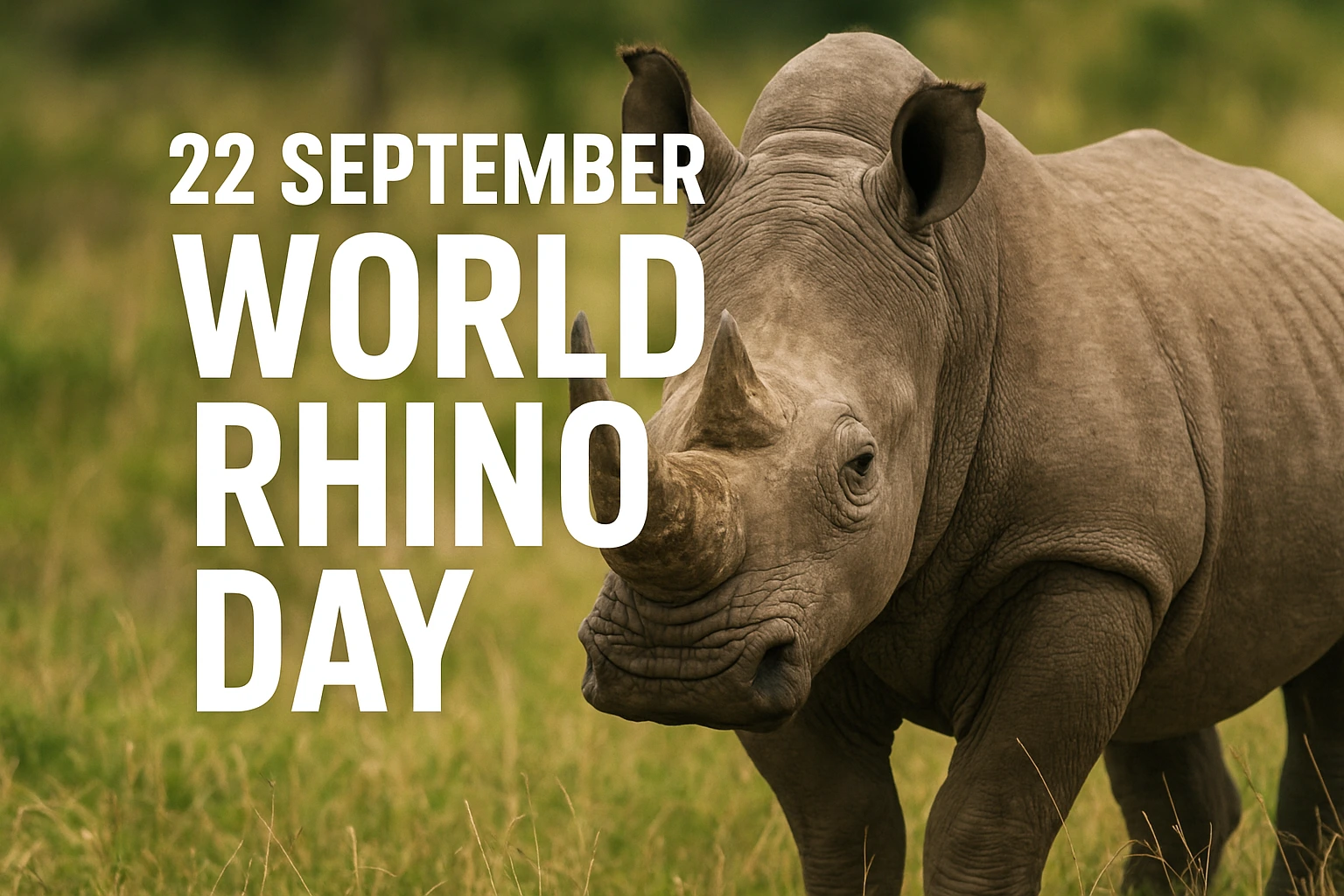Every year on 22 September, World Rhino Day is observed across the world to raise awareness about the conservation of rhinos and the urgent need to protect them from extinction. This global event emphasizes the importance of safeguarding all five rhino species and encourages individuals, communities, and organizations to come together for their protection.
The Five Rhino Species
India is home to the Greater One-Horned Rhinoceros, mainly found in Assam’s Kaziranga National Park.
What is World Rhino Day?
World Rhino Day is dedicated to spreading awareness about the five surviving rhino species—the White Rhino, Black Rhino, Indian Rhino (Greater One-Horned), Javan Rhino, and Sumatran Rhino. It is a reminder of the threats these ancient animals face due to poaching, illegal wildlife trade, and habitat destruction. The day also highlights successful conservation stories, motivating people to take collective action for their survival.
History of World Rhino Day
The initiative began in 2010 when the World Wide Fund for Nature (WWF), South Africa, first announced World Rhino Day. A year later, in 2011, the campaign went global thanks to Lisa Jane Campbell and Rhino Africa, who helped expand its reach internationally. Since then, 22 September has been observed annually as a day to celebrate rhinos and to reinforce the call for stronger conservation measures.
Importance of World Rhino Day
The significance of this day extends beyond awareness—it is about inspiring change. Rhinos have lived on Earth for over 50 million years, yet today they are at risk of disappearing forever.
Key reasons why this day holds importance include:
- Raising Awareness – Educating people about the declining rhino population.
- Combating Poaching – Addressing the illegal rhino horn trade, which remains one of the biggest threats.
- Conserving Biodiversity – Rhinos play a crucial role in maintaining healthy ecosystems.
- Cultural and Heritage Value – Rhinos symbolize strength and resilience in many traditions.
Major Threats to Rhino Survival
Despite global efforts, rhinos continue to face severe challenges:
- Poaching for Horns – Driven by high demand in illegal markets.
- Habitat Loss – Caused by agriculture, deforestation, and rapid urban expansion.
- Climate Change – Affecting ecosystems and food availability.
- Low Reproduction Rate – Making population recovery slow and difficult.
Global Conservation Efforts
Several measures are being implemented to save rhinos:
- Establishing protected reserves and national parks such as Kaziranga National Park (India) and Hluhluwe–iMfolozi Park (South Africa).
- Strengthening anti-poaching units with advanced technologies like drones and GPS trackers.
- Encouraging community participation and promoting eco-tourism.
- Enforcing international laws such as CITES to control illegal rhino horn trade.
How Can You Contribute?
World Rhino Day is not only for conservationists or governments; individuals can also play a role:
- Spread awareness on social media with hashtags like #WorldRhinoDay and #SaveTheRhinos.
- Support and donate to wildlife organizations working on rhino conservation.
- Educate others about the consequences of wildlife trafficking.
- Promote responsible tourism and support eco-friendly initiatives.
Theme of World Rhino Day 2025
Each year, World Rhino Day is celebrated with a theme that reflects the challenges and solutions for rhino conservation. While the official theme for 2025 is yet to be announced, the focus will likely continue to revolve around ending poaching, protecting habitats, and strengthening global conservation partnerships.
Conclusion
World Rhino Day, observed on 22 September, is a powerful reminder of the urgent need to protect rhinos. These majestic animals are not only part of our natural heritage but also vital to maintaining ecological balance. Through global collaboration, strict anti-poaching measures, and community involvement, it is possible to ensure that rhinos thrive for generations to come.
Frequently Asked Questions (FAQs)
Q1. Who first declared World Rhino Day?
“World Rhino Day was first declared in 2010 by WWF-South Africa. It became a global movement from 2011 onwards.”
Q2. Why is World Rhino Day important?
“It raises awareness about the urgent need for rhino conservation and mobilizes public support against poaching and habitat loss.”
Q3. Where is World Rhino Day mainly celebrated in India?
“The day is celebrated nationwide, but major events take place at rhino habitats such as Kaziranga National Park, Assam.”

